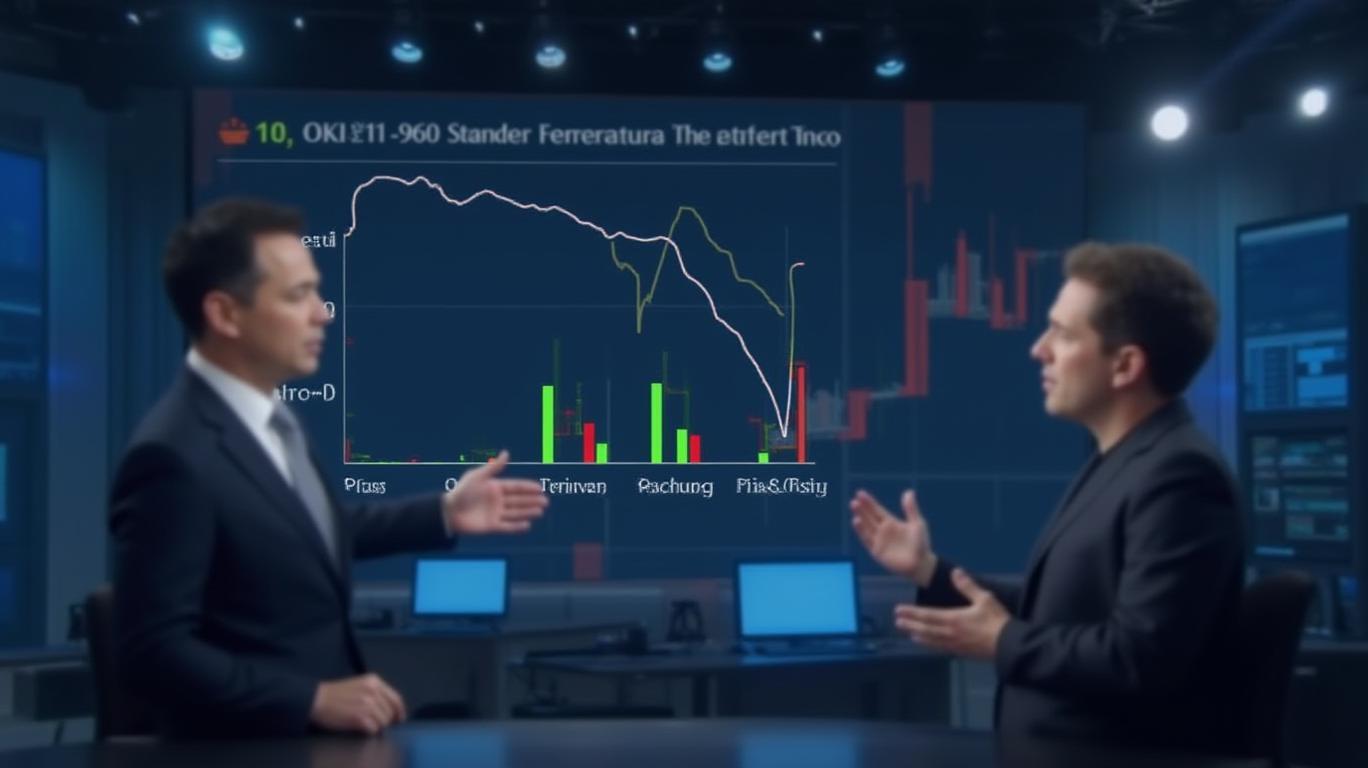Moody's Downgrade Sparks Sector Rebalancing: Where to Rotate Now
The May 16 downgrade of U.S. credit to Aa1 from Aaa by Moody’s is more than a ratings event—it’s a seismic shift demanding immediate portfolio action. With deficits forecast to hit 9% of GDP by 2035 and political dysfunction stifling reform, investors must pivot away from sectors vulnerable to rising rates and fiscal instability while seizing opportunities in industries insulated by secular growth. Here’s how to navigate this new reality.

The Vulnerable: Rate-Sensitive Sectors Face a Perfect Storm
Moody’s downgrade amplifies risks for industries tied to borrowing costs and economic sensitivity:
1. Utilities & REITs: Interest Rate Traps
The 10-year Treasury yield’s surge to 4.5% post-downgrade directly penalizes utilities and REITs, which rely on low-cost debt to fund capital projects. Their valuations are inversely tied to bond yields—every 1% rise in rates reduces their net present value by 10-15%.
The data shows a 23% underperformance versus the S&P 500 since yields breached 4% last quarter. Avoid these until rates stabilize.
2. Consumer Discretionary: Debt-Fueled Demand at Risk
Retailers like
and Target face a double whammy: rising input costs from tariffs and softer consumer spending as borrowing costs climb. The sector’s 7.8% dividend payout ratio is unsustainable if inflation remains sticky.Margins have narrowed by 140 basis points as companies pass costs to consumers, eroding demand.
3. Financials: A Mixed Bag of Winners and Losers
While banks benefit from a steeper yield curve, regional lenders with weak credit quality face rising loan defaults. Focus only on top-tier institutions with strong capital buffers.
The Opportunity: Secular Growth Sectors to Own Now
The downgrade creates asymmetric upside for industries insulated by innovation and pricing power:
1. Technology: The AI-Driven Growth Engine
Tech giants (AAPL, MSFT, NVDA) are already outperforming, with cloud and AI investments driving 12-15% annual revenue growth.
Tech’s 18% EPS growth since 2023 dwarfs utilities’ 2%. Allocate 25-30% of equity exposure here, prioritizing companies with $5B+ in annual R&D spend.
2. Healthcare: Steady Demand in Volatile Times
Healthcare’s $4.5T annual spend grows 5% annually, shielded from economic cycles. Biotech (MRNA, BNTX) and diagnostics (DXC) are poised for breakthroughs in mRNA and precision medicine.
Its 0.3 correlation to GDP means it thrives even in slowdowns.
3. Gold & Industrials: Hedging Without Compromise
Rotate 5-7% into gold ETFs (GLD) as a tail-risk hedge—the metal’s 20% YTD rise to $3,240/oz reflects its role as fiscal instability insurance.
For industrials, focus on companies like 3M (MMM) and Caterpillar (CAT) with pricing power and exposure to infrastructure spending—a potential fiscal priority for Congress.
The Tactical Playbook: Rebalance Now
- Sell First: Reduce utilities and REITs to cash. Their beta to rates makes them a losing bet until 2026 at best.
- Buy Growth: Allocate 40% to tech/healthcare leaders with moats and 15% to industrials with pricing discipline.
- Hedge with Gold: Use 5% of equity exposure to GLD to offset downside risks.
Why Act Now? The Clock Is Ticking
The stable outlook masks a ticking clock: Moody’s explicitly warned that further downgrades hinge on fiscal inaction. With debt-to-GDP at 125% and rising, the window to lock in growth gains is narrowing.
This isn’t a recession call—it’s a recognition that fiscal recklessness has shifted the risk-reward calculus. Investors who pivot to quality growth now will outperform in the next 12-18 months.
The downgrade isn’t an end—it’s a starting gun. Rotate aggressively into secular winners and hedge intelligently. The sectors that thrive here will define the next decade of wealth creation.
Investors: This is your playbook. Execute swiftly.

Comments
No comments yet